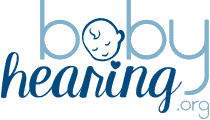Supporting Auditory Skills Development at Home
Your child needs opportunities to listen throughout his entire day in order to gain the experience he needs to make meaning of the sounds he hears. Progress in auditory skills will not happen in the one hour home visit you have weekly or your one hour speech therapy session. Integration of auditory skills development into daily routines and family activities is critical.
The 4 E’s of Auditory Skills Development at Home will help you create a supportive environment for focusing on auditory skills. The 4 E’s of Auditory Skills Development are:
-
Ensure: Ensure a good listening environment for your child by making sure he is wearing his equipment (hearing aid(s), cochlear implant(s), FM, etc.), the equipment is working, you have reduced the background noise (e.g., turn off the TV, go in a room away from other children, etc.), and you are sitting within an arm’s length of your child for the best auditory signal.
-
Explore: Explore what interests your child. Follow his lead. Look for listening opportunities.
-
Expand: Expand on your interaction by adding language to your play. Think about what your child might say if he could and add language to your child’s attempts. (Child: More buh buh; Adult: You want more bubbles!)
-
ENJOY! Join in and play with your child. Enjoy the unique development of your child.
Now that you know how to create a supportive learning environment, here is an overview of the hierarchy of auditory skills development (Erber, 1982). This hierarchy lays out the building blocks for auditory skills development.
-
Detection: “I hear that!” At the detection level, your child is demonstrating awareness of sounds around him.
-
Discrimination: “That sounds different.” At the discrimination level, your child is beginning to know that two sounds are the same or different. (“moo”/”moo” vs. “moo”/”quack quack”)
-
Identification: “I recognize that sound/word.” At the identification level, your child is making sound-meaning connections. When you say, “Moo,” your child might look for the cow in the book you are sharing or show you the sign for “cow.”
-
Comprehension: “I understand your message.” At the comprehension level, your child is processing combinations of words (phrases, sentences, stories). When you say, “Put your cup in the sink and get your shoes.” Your child will follow your direction.
Reference:
Erber, N. (1982). Auditory Training. Washington DC: Alexander Graham Bell Association for the Deaf & Hard-of-Hearing.
Supporting Auditory Skills Development at Home - Activity
You can use the wheel below to help think about how you can target different levels of auditory development within routines at home.


Hearing and Language Websites
Boys Town has created in-depth websites to help parents, caregivers, educators and others caring for children who have been newly diagnosed as Deaf or hard-of-hearing and for individuals of all ages with speech-language concerns.


Childhood Deafness
